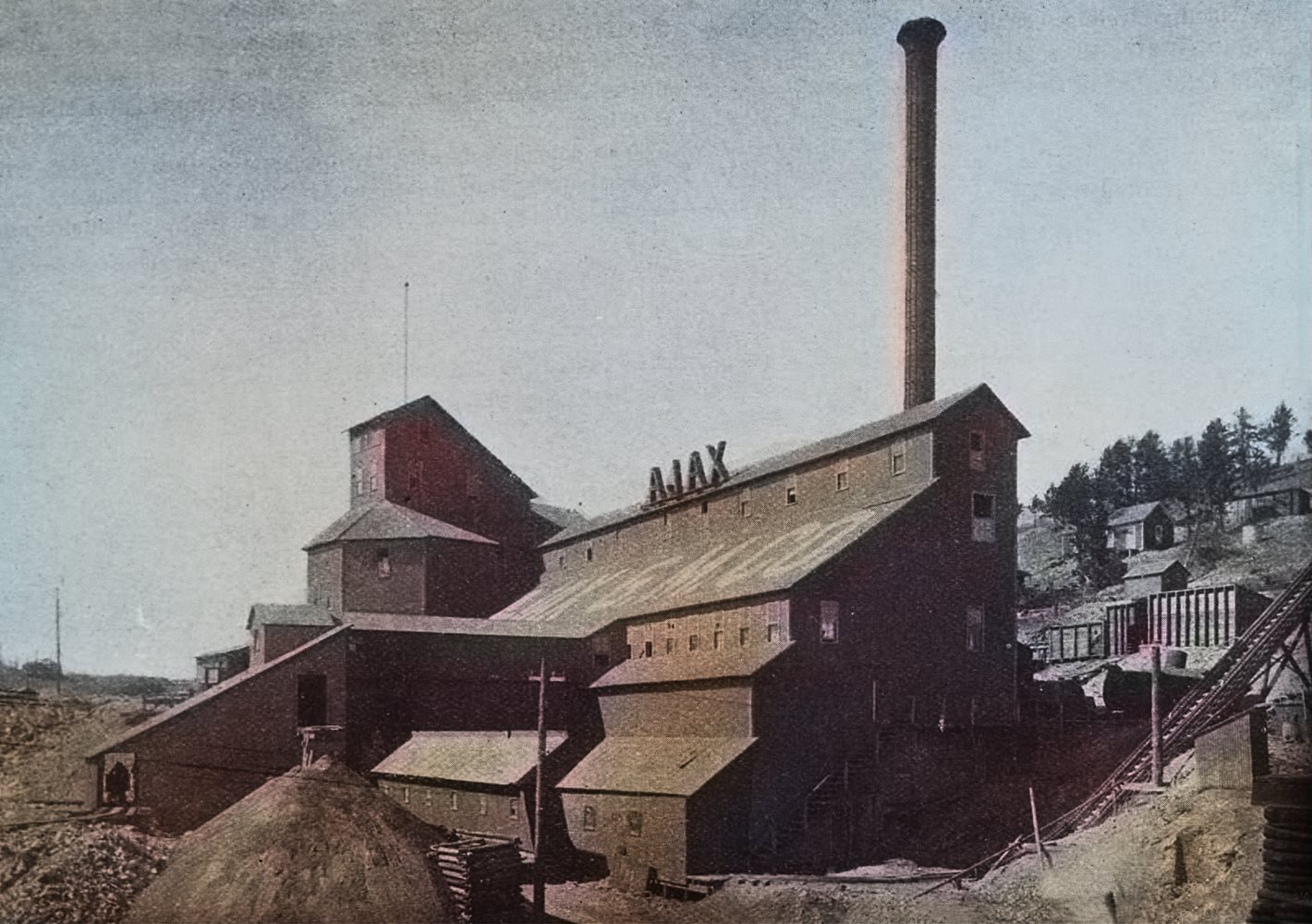-> My Collection; No source to show as I've not scanned the Mining Journal as an album.
But, here is a link to the page on the Hathi Trust Digital Library website.
August 23, 1913 (page 340)
Source had no images, only the diagram, so I used one from my collection.
Every mine doing a large amount of hoisting through a shaft should be equipped with some system of signaling and station lighting other than the old fashioned bell-pulls and candles. Electricity has been developed to such a point that its use in this service has resulted in many safe, efficient, and reliable installations, one of which, at the Ajax mine, Victor, Colorado, is worthy of description.
The mine is opened by a 3-compartment shaft 1200 ft. deep, and at certain seasons of the year is exceedingly wet, due entirely to surface drainage. As this surface water is acid, after passing the first or second level, a great deal of trouble is experienced with any metal work placed in the shaft. Lag screws in the guides, nails in ladders, and turnsheets on the stations are eaten away in a few months.
When electric signals and lights were first installed in the mine the separate wire system was used. This system caused so much trouble from short circuits and wires being eaten entirely through by the acid mine water, that a cable made especially for the purpose and containing five wires, two for power and three for signaling, was substituted. Since that time little trouble has been experienced except on the stations where the wires are exposed to the drip from the timbers.
The cable is cut at each level and run into a junction-box placed at a convenient point on the station, and is protected from moisture as much as possible, decay usually starting at the bend caused by bringing the cable into the level. From the junction-box the wires are run to their respective lights and switches.
Station Lights
Each station is lighted by four or more 60-watt carbon lamps screwed into waterproof sockets and is equipped with three pull-switches, one for each compartment and one for the skip tender's signal or flash. The pull-switches, at each shaft compartment, ring their respective bells on the engineer's platform, but the skip-tender's pull-switch operates the buzzers on every level in the mine and one on the surface within hearing of the hoistman.
This signal is for the purpose of notifying the skip-tender when any level is without empty cars or when some one wishes to move from level to level. A pull-switch attached to this circuit is also within reach of the hoisting engineer for use in calling for repeat signals, etc. Bells were originally used on all the levels on this circuit, but were later abandoned on account of their large first cost and frequent repair due to the presence of so much water. Small buzzers are now used in series with 100-watt carbon lamps and are giving good service.
Although the pull-switches are constructed especially for this class of work and are made as nearly water-tight as possible, a little trouble has been experienced on account of water being drawn by capillary attraction up the stem of the switch and corroding the interior. The bells used on the hoisting circuits are large single-stroke gongs using 110 to 120-volt alternating current, the same as the rest of the system, and have been in use about ten years without giving any trouble. In case the power should be interrupted, ordinary bell cords, hung in the hoisting compartments, are used; as is also the case when examining the shaft between levels.
By reference to the diagram, furnished by C. A. Bliley, mine electrician, connections may be readily understood.

